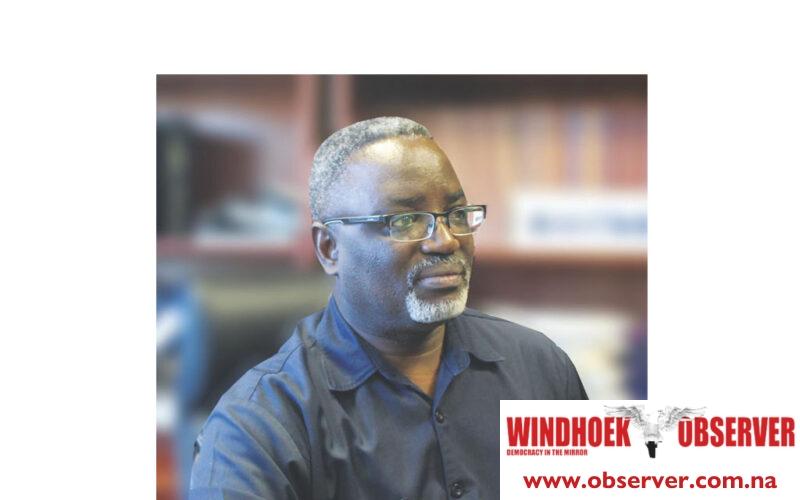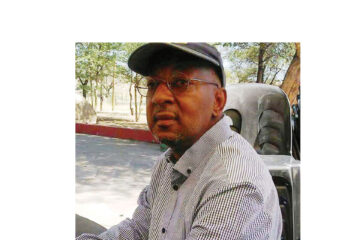PAUL T. SHIPALE (with inputs by Folito Nghitongovali Diawara Gaspar)
Abstract
This article interrogates the Eurocentric hegemony embedded in memorializing the Herero and Nama genocide (1904–1908) as Southern Africa’s singular genocidal event. Drawing on Frantz Fanon’s dialectics of colonial violence and liberation, it argues for a pan-African historical consciousness that centers the interconnected suffering of marginalized groups—including the Ovambandja, San, Ovakwanyama, Lozi, Mbundja, Ndebele, Shona, Kalanga, Xhosa, Zulu including 8 million Congolese who were massacred by the Belgians. By exposing the colonial logic of hierarchizing suffering, we call for a unified ethics of remembrance that rejects Western-defined exclusivity in justice.
- Introduction: Fanon and the Unfinished Revolution of Memory
” Colonialism is not satisfied merely with holding a people in its grip… By a kind of perverted logic, it turns to the past of the oppressed people and distorts, disfigures, and destroys it.” — Fanon, The Wretched of the Earth (1961). The recognition of the Herero and Nama genocide marks a critical rupture in Europe’s sanitized colonial narrative. Yet, its memorial singularity risks reproducing the very colonial epistemology Fanon condemned: fracturing African solidarity by elevating some suffering over others. This article asserts that true decolonization demands a pan-African memory project—one that dismantles the Eurocentric taxonomy of “worthy” and “unworthy” victims. Do we truly understand the implications of such selective remembrance? Are we, by accepting this singular narrative, inadvertently perpetuating the very colonial mindset we seek to dismantle?
- The Herero-Nama Genocide: A Fanonian Critique of “Recognized” Violence
The German annihilation of the Herero and Nama exemplifies what Fanon termed “absolute violence” —the colonizer’s attempt to negate the colonized’s humanity. While foundational, its institutional recognition risks becoming a colonial alibi. As Fanon warned, partial justice sustains the psychological infrastructure of oppression: “The colonial world is a world cut in two… divided into compartments.”
Selective memorialization compartmentalizes suffering, obscuring the continuum of colonial genocide across Southern Africa. The Ovambandja, hunted San, and dismembered Lozi kingdoms are casualties of the same racist project—erased not by absence of violence, but by the West’s curated amnesia. Is it possible that the very act of recognizing one atrocity, while ignoring others, serves to further entrench the power dynamics of the past? Are we, in our pursuit of justice, inadvertently falling into the trap of a new form of colonial categorization? But why is it that the world accepts Germany’s culpability for genocide against the Herero and Nama, while other Western powers are not similarly held accountable for their comparable atrocities?
It is good that Namibia has now set a date to commemorate the Genocide Remembrance Day, honouring the victims of the 1904-1908 massacre of the country’s indigenous populations even when some members of the Ovaherero and Nama communities rejected 28 May as Genocide Remembrance Day, citing historical inaccuracy, exclusion and continued calls for restorative justice. The concerned groups said 22 April was the more suitable date, as their ancestors were massacred then, while others view 2 October, the day on which the extermination order was given by Lothar von Trotha, as more appropriate. However, the date 28 May marks the closure of the concentration camps. It was a neutral, unifying choice that reshaped the genocide calendar. We agree that it is important that the narratives of the survivors and their descendants are central to the commemoration, ensuring that the history is accurately conveyed to future generations.
3. Forgotten Atrocities: Fanon’s “Zone of Non-Being” in the Borderlands
a. Ovambadja/Ovawambo (Angola/Namibia)
Under Portuguese Estado Novo, forced labor and massacres reduced the Ovambandja to what Fanon called “the wretched of the earth“—a people stripped of history.
Their erasure reflects Lusophone Africa’s marginalization in a Franco-German-centric memory regime. Why do some narratives gain international prominence while others, equally devastating, remain in the shadows? Is this not a continuation of the colonial project, dictating whose suffering is deemed worthy of remembrance?
According to its tradition, Ombadja was populated from both Oukwanyama and Onkumbi. As a result, their kingdoms became divided along the directions of this migration. The kingdom of Big-Ombadja was founded by immigrants from Oukwanyama and had its capital at Omhungu, while the immigrants from Onkumbi founded the Little-Ombadja with its capital at Onaluheke. These kingdoms were ruled by different royal clans. Those at Omhungu were Aakwanelumbi clan, while those at Onaluheke were Aakwanayuma (Williams, 1991).
According to Kaholongo, the two Ombadja kingdoms lived in peaceful co-existence until the arrival of the Portuguese colonialists during the mid-18th century. The Portuguese, after conquering the Nkumbi kingdom, their next target was the Ombadja kingdom. However, the two Ombadja kingdoms, having been well organised militarily at the time, delayed and kept the Portuguese invasion at bay for period of 40 years between 1880 and 1904.
It was only in 1904, when the Protuguese soldiers crossed the Nkumbi /Kunene River into the Ombadja territory and built a fort at Xangongo, presently a town and commune in the municipality of Ombadja, in Angola’s Cunene province. During this period, the combined Ovambadja military was commanded by both King Shahula shaHamadila and King Sheetekela shaHuudulu. They fought fierce battles at Evelo laPembe, Omukoyimo, Oda yaNangeda, Onhunda yEvala and many others. In both these battles, the Portuguese soldiers suffered heavy defeat.
After having subdued the Nkhumbi people, Portuguese troops advanced from Huila southward into territories which were just claimed by Portugal but not yet under control. At Cunene River they were confronted with the resistance of two Ovambo peoples, the Cuamato/Kwamato (Ovambadja people) and Cuanhama/Kwanyama, led by their king Sheetekela shaHuudulu. When an advanced unit composed of 500 Portuguese soldiers and Nkumbi auxiliaries under captain Luís Pinto de Almeida crossed the river, about 300 men were massacred in an ambush.
The battle of the Cunene river took place between Portuguese colonial forces and Ovambo warriors from Oukwanyama and Ombadja in modern-day Angola on 25 September 1904. The defeat was one of the heaviest defeats in Portuguese colonial history since Alcácer Quibir (1578) and is comparable to the British defeat at Isandhlwana against the Zulus (1879), the Italian defeats at Dogali (1887) and at Adwa (1896) against the Ethiopians or the Spanish defeats at Melilla (1909) and at Annual (1921) against the Rif. The Portuguese defeat was followed by a punitive expedition in 1905 and 1907, but not before 1916 Southern Angola was “pacified”.
Indeed, this military defeat and humiliation of the Portuguese could not be taken lightly by the government of Portugal in Lisbon. As a result, the Portuguese government mobilised all military resources necessary and launched a decisive battle against the Ovambadja kingdoms at Oshana shaMufilu, south of Xangongo in 1907. After their defeat, King Shahula went into exile to Uukwaluudhi. According to Kaholongo, the military defeat of King Shahula was attributed to the betrayal by his nephew, Kaipalulwa kaNamholo, who defected to the Portuguese and provided them with critical military intelligence against Ovambadja.
King Sheetekela shaHuudulu, whose palace at Omhungu was not yet attached by the Portuguese, continued the fight. Due to the superiority of the military hardware of the Portuguese colonial forces, King Sheetekela was eventually defeated and fled his palace at Omhungu and went to seek refuge at Oukwanyama where he was accommodated by King Mandume yaNdemufayo. After the death of King Mandume, King Sheetekela went to settle in western Kavango and settled at a village which he named Omhungu after his former palace. The name Omhungu was later changed to what is known as Mpungu in Kavango West today.
When peace returned to Oukwanyama and Ombadja, King Sheetekela decided to return to his former palace at Omhungu but the Portuguese had by then permanently settled at his palace and established a military post there. As a result, he settled at Etomba laSheetekela in Oukwanyama for some years, before he went to live in Okalongo until his death in 1927. He was buried at Onambome village in Okalongo. His grave can still be found there (Tshilongo, 1990).
b. The San (Namibia/Botswana/South Africa)
The San’s dehumanization—hunted, poisoned, Christianized—embodies Fanon’s analysis of cultural genocide: “Imperialism leaves behind germs of rot which we must clinically detect and remove from our land and our minds.” Their slow extermination persists in archives as “frontier clearing,” not genocide. How do we reconcile the historical record, often written by the colonizer, with the lived experiences of the colonized? Are we truly confronting the full scope of colonial violence if we accept its sanitized terminology?
c. Lozi & Mbundja (Zambia/Namibia)
British indirect rule dismantled the Lozi Kingdom through structural violence—Fanon’s “systematized negation of the other.” The Mbundja, displaced and enslaved, exemplify the border as a site of colonial fracture. When we speak of violence, do we limit our understanding to overt acts, or do we acknowledge the insidious, systemic forms that dismantle societies and cultures? Is the absence of direct military conflict truly an absence of violence?
d. Ndebele & Shona (Zimbabwe)
The Chimurenga massacres (1890s) reveal the genocidal core of Rhodes’ “pacification.” Fanon’s insistence that “colonialism = violence in its natural state” refutes euphemisms like “pacification.” How easily do we accept the language of the oppressor, allowing terms like “pacification” to mask brutal realities? Are we critical enough of the narratives presented to us, even when they come from seemingly authoritative sources?
e. Tswana & Kalanga (Botswana/Zimbabwe)
Botswana’s “peaceful” myth obscures Tswana conscription and Kalanga erasure—a psychological violence Fanon attributed to colonialism’s “gangrene” on cultural identity. Can peace truly exist when historical injustices remain unaddressed and the psychological scars of colonialism continue to fester? Are we willing to look beyond superficial appearances to confront deeper, systemic issues?
f. Xhosa & Zulu (South Africa)
The Cattle-Killing (1856–57) and Anglo-Zulu War were ethnocidal. Fanon’s framing of land theft as “the death and burial of Indigenous sovereignty” applies here. Do we fully grasp the profound impact of land dispossession, not just as an economic act, but as an assault on identity, culture, and sovereignty? How much of our understanding of history is shaped by the perspectives of those who benefited from these acts?
g. Ovakwanyama and the Atlantic Slave Trade
What about the Ovakwanyama and other tribes in the north who were taken into slavery via Lubango and Moçâmedes, then Lobito and Benguela to eventually reach Luanda and then traversed the horrible and infamous Atlantic Slave Trade? Why their suffering often is omitted from discussions of colonial atrocities and reparations? Does the geographical distance from the Herero and Nama genocide diminish the gravity of their experience, or is it another manifestation of the West’s selective memory?
4. Competitive Victimhood: Colonialism’s Psychological Trap
“The colonized man will first manifest this aggressiveness which has been deposited in his bones against his own people.” — Fanon, Black Skin, White Masks (1952). The Herero-Nama’s hard-won recognition must not lapse into what Fanon diagnosed as intra-oppressed conflict. When genocide memory becomes a scarce resource doled out by former colonizers, it perpetuates the colonial logic of divide-and-rule. True decolonization rejects Western validation as the arbiter of suffering. Are we, in our eagerness for recognition, inadvertently participating in a system that pits one group’s suffering against another’s? Does seeking validation from the former colonizer truly lead to liberation, or does it reinforce their power to define our history and our pain?
5. Toward a Fanonian Ethics of Pan-African Remembrance
“Each generation must discover its mission, fulfill it or betray it.” — Fanon, The Wretched of the Earth
Fanon’s call demands we reclaim memory as a revolutionary act:
– Acknowledge All Atrocities: Reject legalistic hierarchies. Portuguese forced labor and British scorched earth are branches of the same tree. Are we willing to dismantle the comfort of selective outrage and embrace the full, uncomfortable truth of colonial brutality across all its manifestations?
– Build a Southern African Memory Archive: Decentralize knowledge from Europe; center oral histories. Can we truly decolonize memory if we continue to rely on archives curated by the colonizers? What stories are lost when we do not actively seek out and preserve the narratives of the oppressed?
– Reparations as Reparative Justice: Demand reparations for all, not only those anointed by German guilt. If justice is truly universal, why do we allow its application to be fragmented and parceled out based on the convenience or conscience of former colonial powers? Is this not another form of control, even in the guise of restitution?
– Decolonize Education: Teach children that San resistance, Ovambandja rebellions, and Chimurenga uprisings are threads in Africa’s tapestry of defiance. How can future generations truly understand their history and identity if they are taught a sanitized, Eurocentric version of the past? Are we equipping them with the tools to critically analyze power structures, or are we inadvertently perpetuating intellectual subservience?
6. Conclusion: Liberating Memory, Reclaiming the Continent
The Herero and Nama genocide is a part of Southern Africa’s story—not the entirety. To honor Fanon’s legacy, we must refuse the colonial carving of our past into “significant” and “insignificant” suffering. Pan-African remembrance is not a competition in trauma, but a collective reclamation: “Let us reconsider the question of humanity… Let us strive to create the whole man, whom Europe has been incapable of bringing to triumphant birth.” Ultimately, the liberation of memory is inextricably linked to the liberation of the continent itself. By embracing a holistic, Pan-African understanding of colonial violence and its enduring legacies, we not only honor the countless forgotten victims but also forge a path towards a truly decolonized future. Are we prepared to undertake this profound and necessary journey, challenging not only external narratives but also our own internalized biases? The answers to these questions will define the future of African memory and, indeed, the future of Africa itself.
On the other note, I read a piece written by a certain Dr Fundo Harris on social media in which he questioned the UDP and its secessionist propaganda which claimed that the people from the Zambezi Region are oppressed by the Namibian government. Dr Fundo Harris then asked if they are oppressed, can the UDP tell why Namibians from the Zambezi region have occupied top government and private sector positions since Independence?
Dr. Fundo Harris’ statement stands as a compelling political and sociological intervention – rich in empirical evidence and unapologetically critical of both secessionist rhetoric and the failures of local governance. At its core, his message is unequivocal – the problem is not systemic oppression by the Namibian state, but a pattern of internal regression within the region itself. The path forward, he argues, lies not in secession, but in self-correction. Dr. Fundo Harris offers a hopeful and strategic reframing – one that calls for the emergence of a new leadership generation, unburdened by the post-independence tribalism and secessionist nostalgia of the past. By aligning this generational shift with a vision of patriotic inclusion and national cohesion, he positions Zambezi not as a peripheral region, but as a vital contributor to Namibia’s democratic and developmental future. Disclaimer: The opinions expressed here do not necessarily reflect those of our employers and this newspaper but solely our personal views as citizens and Pan-Africanists.
Revised References (Fanon-Centered)
– Fanon, F. (1961). The Wretched of the Earth. Grove Press.
– Fanon, F. (1952). Black Skin, White Masks. Éditions du Seuil.
– Mamdani, M. (2001). When Victims Become Killers. Princeton University Press.
– Césaire, A. (1955). Discourse on Colonialism. Présence Africaine.
– Rodney, W. (1972). How Europe Underdeveloped Africa. Bogle-L’Ouverture.
– Ndlovu-Gatsheni, S. (2013). Empire, Global Coloniality and African Subjectivity. Berghahn Books.
– Mateus Ndalipo Kaholongo. (2019-06-17) Revered Ovambadja Heroes: King Shahula Shahamadila and
King Sheetekela Shahuudulu. New Era Newspaper
– Napandulwe Shiweda. Department of Humanities & Arts, School of Humanities, Society and
Development, UNAM. Battle of the Cunene/ Cuamato/Kwamato. Date: 25 September 1904
Location: Vau de Pembe (Evelo laPembe, near the Cunene River (modern-day Ombadja, Cunene
Province, Angola)



